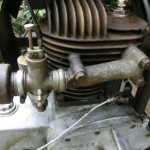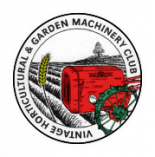Home › Forums › The Machinery Forums › Garden implements › Valves
- This topic has 6 replies, 3 voices, and was last updated 4 years, 9 months ago by
rotevat.
-
AuthorPosts
-
January 13, 2021 at 5:50 pm #36399
rotevat
ParticipantRegarding the Briggs Stratton side valve engines how important is the valve clearance to their operation ? Is correct adjustment important or will they run regardless.it seems if adjustment is required can be a “ involved” job
January 13, 2021 at 6:08 pm #36400chris
ParticipantThe most important thing is that there is a gap of at least what is specified, otherwise when the engine is hot the valves may not close fully, so causing the valve to burn and reduce performance.
Obviously there is not much that can be done with too wide a gap, as the adjustment is to grind the end of the valve! I’m my limited experience the valve lift is quite high so performance is less affected Though if tuning for performance you will have to fit new valves.Valve removal is fairly easy if you make up a G clamp type tool to facilitate it.
January 14, 2021 at 3:12 pm #36405 wristpinParticipant
wristpinParticipantThe most important thing is that there is a gap of at least what is specified, otherwise when the engine is hot the valves may not close fully, so causing the valve to burn and reduce performance.
Obviously there is not much that can be done with too wide a gap, as the adjustment is to grind the end of the valve! I’m my limited experience the valve lift is quite high so performance is less affected Though if tuning for performance you will have to fit new valves.One issue with over gapped clearance is that many small engines have a decompression feature that involves lifting a valve ( usually the exhaust) to aid starting. Consequently an over gapped valve may reduce or nullify that feature. It is important when checking clearances that both valves are “ off cam”, particularly where a decompressor, which may be a “bulge” in the cam, is concerned; gap the valve when it’s still “on cam” and you will end up with a wide gap and an engine that snatches or kick back when starting is attempted.
In the absence of engine specific information, a good rule of thumb is that both clearances should be checked when the piston is a quarter of an inch down the bore AFTER top dead centre.January 15, 2021 at 4:22 pm #36415rotevat
ParticipantAnother question : how do u remove the cylinder type exhaust if the body is totally corroded. Also do the carb fuel pick tubes just pull off or do u have to prise the small clip ? Cheers for all the help
January 15, 2021 at 11:32 pm #36417 wristpinParticipantJanuary 16, 2021 at 11:29 am #36421
wristpinParticipantJanuary 16, 2021 at 11:29 am #36421 wristpinParticipant
wristpinParticipantExhaust removal – my method. I’ve found that using this method from the outset rather than getting everything chewed up with Stillsons etc, usually to no avail.
Cut the old muffler off leaving about 1/2” of the stub proud of the block.
Take a 4” length of hacksaw blade in a handle or wrapped in masking tape, with the teeth pointing back to cut on the pull stroke.
Insert right into the stub and make a longitudinal cut through the wall of the stub down to the point where it’s just touching the threads in the block.
Take a set of Mole / Vice grips and grasp the stub at right angles / parallel to the block face and position one jaw along, but not overlapping the cut.
Squeeze the grips to collapse that section into the bore of the pipe.
Continue the squeeze and collapse until a good proportion of the pipe has pulled away from the internal wall of the block.
At this stage the grips can usually be repositioned to wrangle the collapsed stub out of the block.January 16, 2021 at 8:51 pm #36422rotevat
ParticipantCheers for all the advise
-
AuthorPosts
- You must be logged in to reply to this topic.



